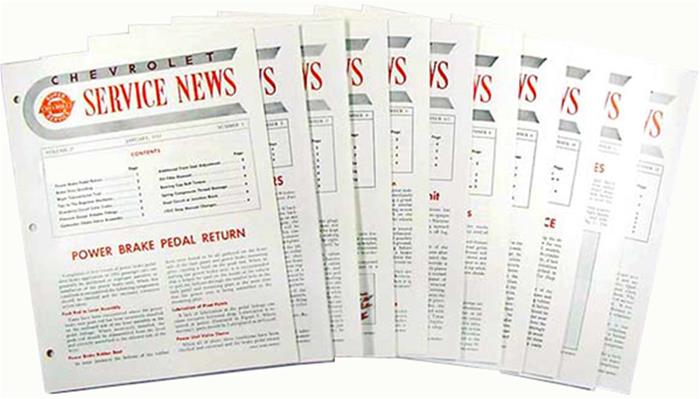Uncommon Sense about Car Body Manuals

Sometimes car body repair is included in the main factory shop manual, and sometimes there’s a separate book for body work. When there’s a separate book, how it works isn’t always obvious.
1. Misunderstanding: When you look at a car from the outside, everything you see will be covered in a US body manual.
 Fact: Cars bodies and chassis are assembled on different assembly lines. The front end is attached to the chassis and is not covered in the body manual. This applies to body repair manuals, body parts books, and body assembly manuals. You might expect the following items to be covered in a body manual, but they are almost always excluded from Ford or GM body books: front fenders, grill, hood, and dashboard (except padding). These items are usually found in the chassis manual instead. This applies to body repair manuals, parts books, and assembly manuals. 2. Misunderstanding: Restorers often don’t know what kind of information a typical US body manual contains. People sometimes assume that a body manual explains how to fix dents or put on Bondo.
Fact: Cars bodies and chassis are assembled on different assembly lines. The front end is attached to the chassis and is not covered in the body manual. This applies to body repair manuals, body parts books, and body assembly manuals. You might expect the following items to be covered in a body manual, but they are almost always excluded from Ford or GM body books: front fenders, grill, hood, and dashboard (except padding). These items are usually found in the chassis manual instead. This applies to body repair manuals, parts books, and assembly manuals. 2. Misunderstanding: Restorers often don’t know what kind of information a typical US body manual contains. People sometimes assume that a body manual explains how to fix dents or put on Bondo.
 Fact: Here’s the description of what a 1966 Fisher Body manual contains. It’s typical of the content of a GM body manual:
Fact: Here’s the description of what a 1966 Fisher Body manual contains. It’s typical of the content of a GM body manual:
Find out how to work on the convertible top, door locks, door handles, window cranks, power windows, trunk lid and lock, tail gate, manual seats, and power seats. Learn how to remove and install glass, vents, headlining, vinyl roofs, convertible top, weatherstripping, interior trim, door panels, arm rests, and exterior moldings.
3. Misunderstanding: Japanese car body manuals have content similar to the Fisher Body manuals, listed in #2 above.
 Fact: Japanese car body manuals are what a US car company would call Collision Manuals. Collision manuals cover measurements for frame and door openings, weld and sealant lines, and instructions for attaching or removing sheet metal. They do not typically cover door locks, window mechanisms, or body electrical. US car companies sometimes offer Collision parts books, which cover sheet metal, exterior moldings, front end, and radiators.
Fact: Japanese car body manuals are what a US car company would call Collision Manuals. Collision manuals cover measurements for frame and door openings, weld and sealant lines, and instructions for attaching or removing sheet metal. They do not typically cover door locks, window mechanisms, or body electrical. US car companies sometimes offer Collision parts books, which cover sheet metal, exterior moldings, front end, and radiators.

